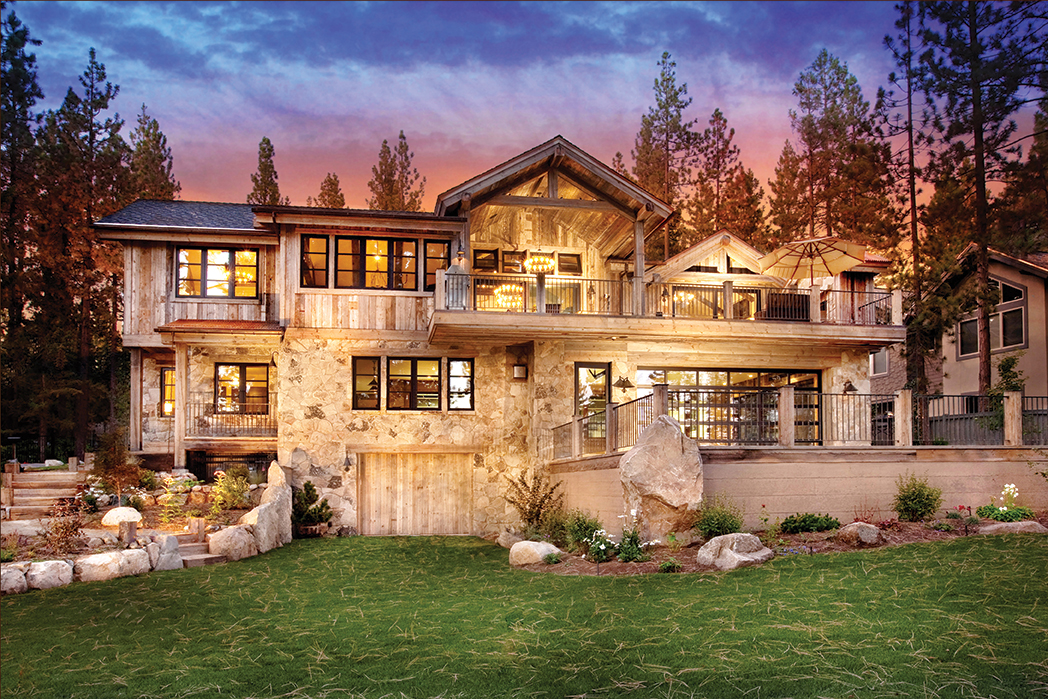
04 Mar Battling Indoor Polution
The U.S. Green Building Council expects the demand for green homes to continue to rise, and contractors in Tahoe—such as Robert Heller at Heller Construction and Kevin Hanna of Greenwood Homes—say, ‘bring it on.’ Environmentally friendly houses have many benefits, among them a 30 to 50 percent reduction in energy use, 35 percent reduction of carbon emissions, 40 percent reduction in water use and 70 percent reduction in solid waste compared to a typical home. But, despite the obvious benefits, green building can have a downside. With well-sealed homes, indoor air can become stale, stagnant, and without proper precautions, toxic.
Health Concerns
Making an airtight home in order to reduce energy consumption results in a higher concentration of indoor pollutants, known as volatile organic compounds (VOCs), than non-green homes. Green homes are so well sheltered from outdoor weather that they require additional ventilation.
VOCs are carbon-based chemicals, and are emitted from various building materials, including paints, lacquers, varnishes, cleaning supplies, aerosols, degreasers, pesticides, furnishings and office and craft supplies (such as printers, glues and adhesives). In the short term, VOCs may cause dizziness, nausea, irritation to eyes, nose and throat, and worsen asthma symptoms. Long term, they may cause cancer, kidney and liver damage, and damage to the central nervous system.
While everyone is exposed to VOCs, the potential for elevated VOC levels is greater in well-sealed homes when careful measures are not taken to lessen them.
“One of the most integral parts of green building is having an airtight building envelope,” says Heller. “As a function of having a tight envelope, the house will need to be mechanically ventilated with a balanced and filtered fresh air system.”
“Going green” requires a commitment not just in the design-and-build stages of the home, but also in maintaining a healthy indoor environment after the house is completed. Installing a high-tech ventilation system certainly helps lighten the VOC pollutant load, but the homeowner and builder must also be cautious in sourcing the finish materials, such as paint, flooring, countertops, stain, adhesives and furniture.
Lacquered hardwood floor and carpet are two large contributors to VOC off-gassing, which is why it’s important for green and non-green homeowners to choose new flooring wisely. According to The Ecology Center, 95 percent of carpets available on the market emit some of the most harmful VOCs, such as 4-phenylcyclohexane (4-PC). 4-PC can damage the central nervous system and cause irritation to the eyes and respiratory system. While the majority of VOC off-gassing occurs within the first few months after installation, pollutants such as 4-PC are present for up to five years following installation.
While it is near impossible to live in a no-VOC home, there have been major advancements in the building materials industry. Many companies now offer products that have low or no VOCs, Heller says. These materials promote a healthier indoor living environment within green homes and non-green homes alike, but are considerably more expensive than their VOC-containing counterparts.

Geothermally heated, reclaimed wood home in Incline Village by
Greenwood Homes, photo by Joy Strotz
Protection from Household Pollution
Offering solutions to the indoor pollution problem, manufacturers of regular household materials are picking up the VOC tab. Colorhouse manufactures zero-VOC paint and even packages it in a LEED-certified facility using recycled packaging. Heller recommends using Loctite PL 400 for adhesives, reclaimed wood flooring and beeswax for wood finishes. Additionally, recycled glass, concrete or wood countertops are choice for low or no-VOC emissions.
Greenwood Homes recently built an eco-friendly house entirely out of reclaimed wood in Incline Village, says Hanna. He suggests using reclaimed wood for both building and finishing a home in order to provide both an eco-friendly and no-VOC solution to the flooring issue. You may miss that new carpet smell, but you’ll rest easy knowing you’re breathing clean air.
In addition to carefully choosing building materials, a homeowner must be cognizant of the types of housecleaners, aerosols and degreasers used in the regular upkeep of the home. The days of heavy duty abrasive cleaners are over as many homeowners (green or otherwise) are beginning to take a softer approach to keeping a house spick-and-span by using all-natural solutions.
Vinegar diluted with warm water is a safe and cost-effective way of killing bacteria on surfaces, as well as removing stains from carpet and upholstery. Organic probiotic cleaners, such as Natural House (or even unflavored kombucha), defeat bad bacteria with good bacteria. They also prohibit germs from re-colonizing for a longer period of time than a standard cleaner. While cleaning with vinegar or kombucha may give an off-putting odor, these are great options when taking air quality into account.
All things considered, the folks at Heller Construction and Greenwood Homes agree there are no real downsides to building green, so long as the initial capital investment makes sense to the owner. While maintaining clean air inside of a sealed structure is difficult, it is not impossible if the residents take the proper precautions in building and maintaining the home.
Julia Mueller is a Reno-based writer and food blogger. Find more of her work at www.theroastedroot.net.




No Comments